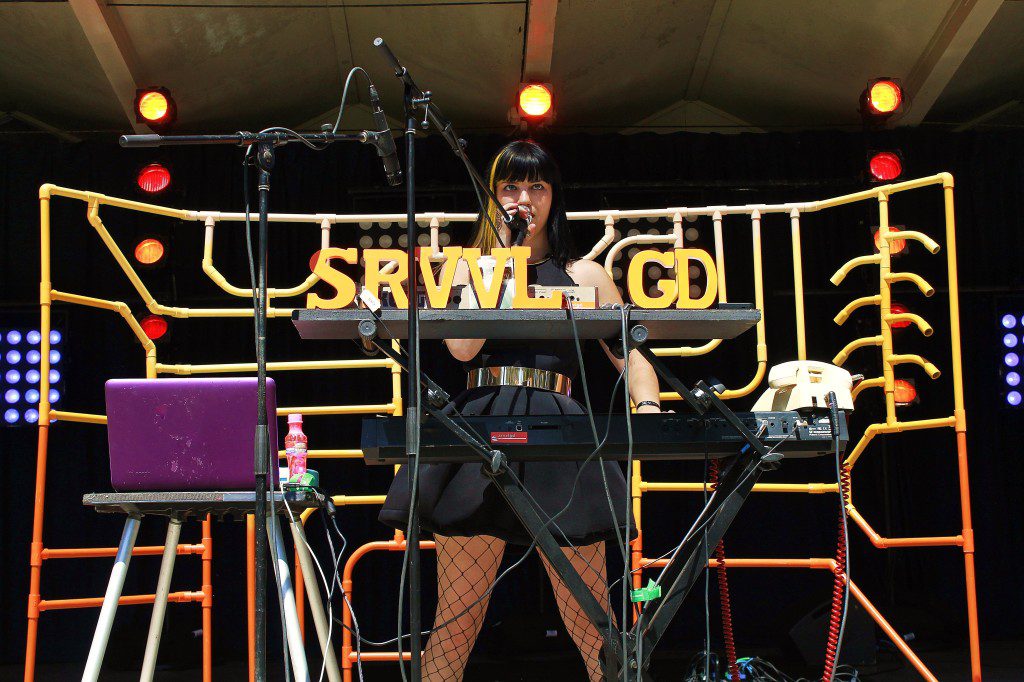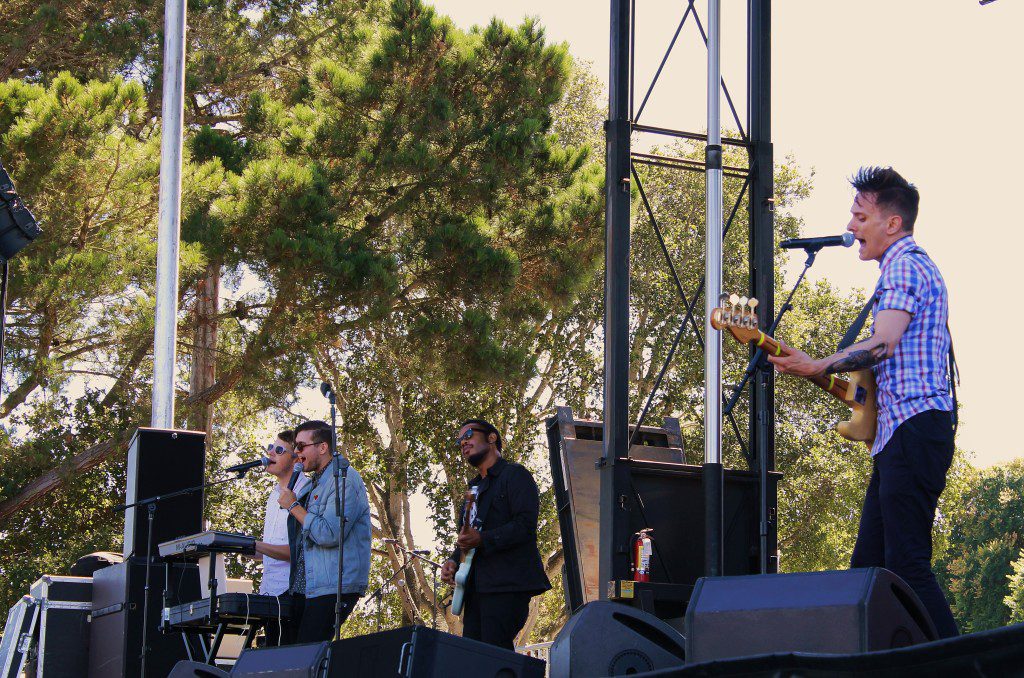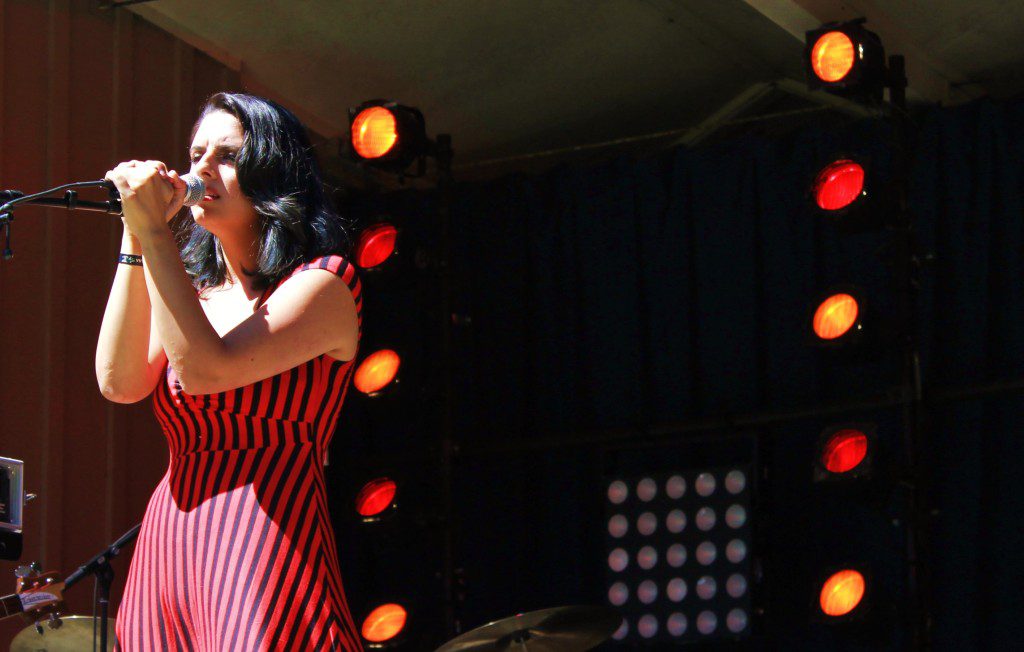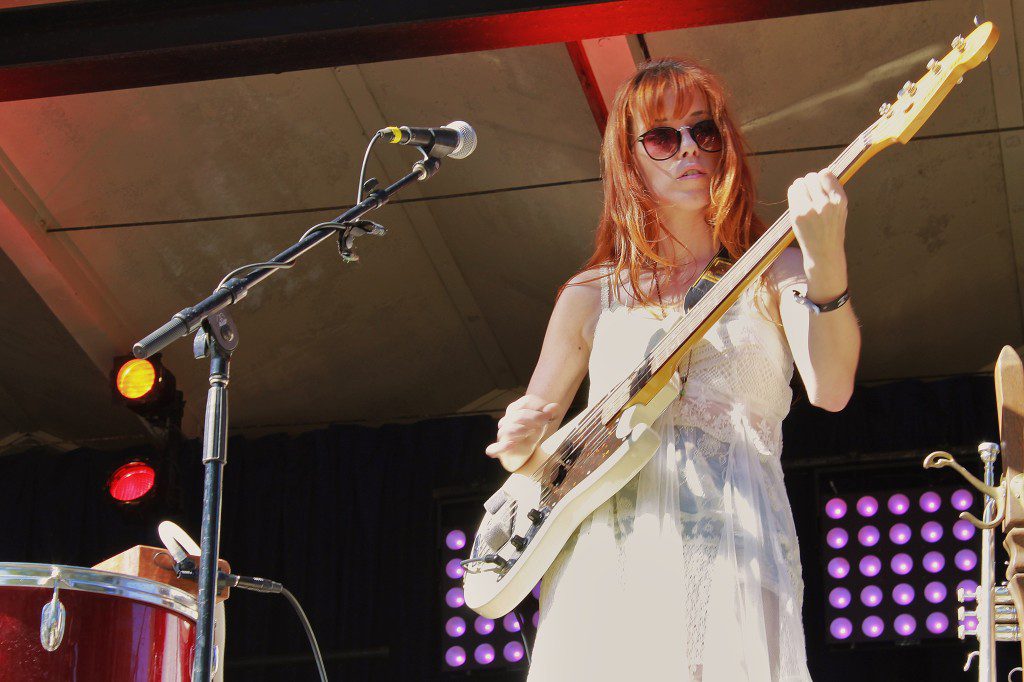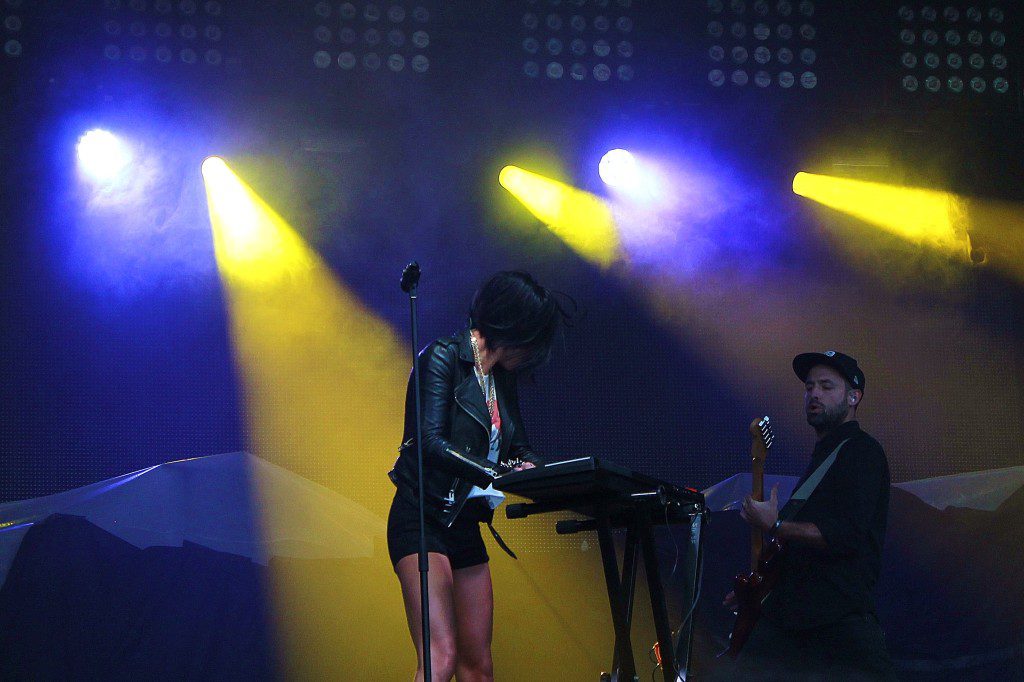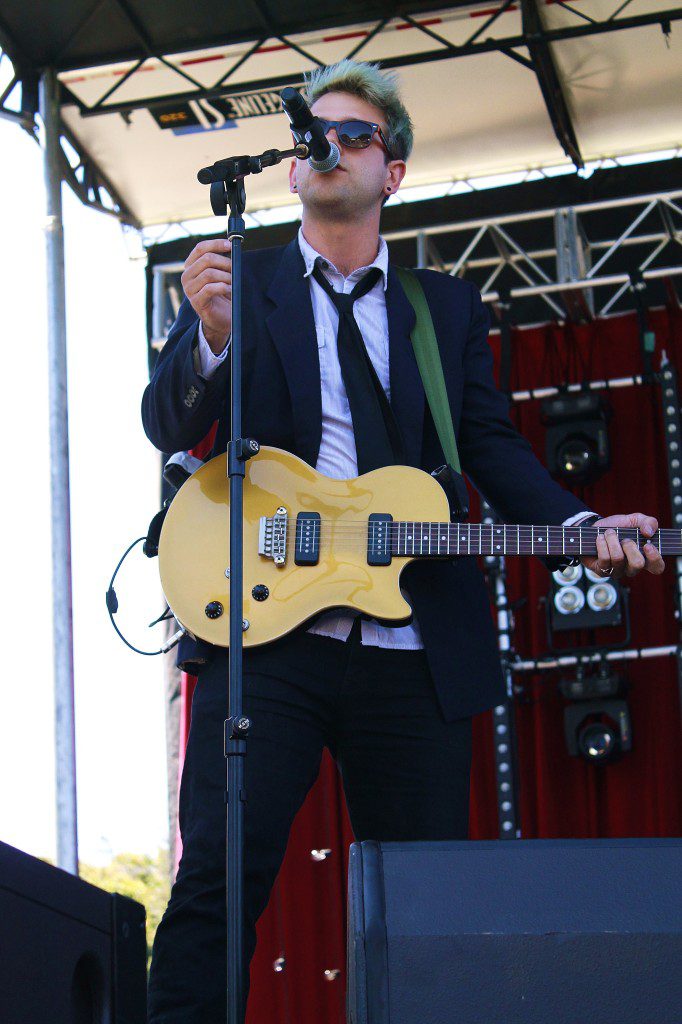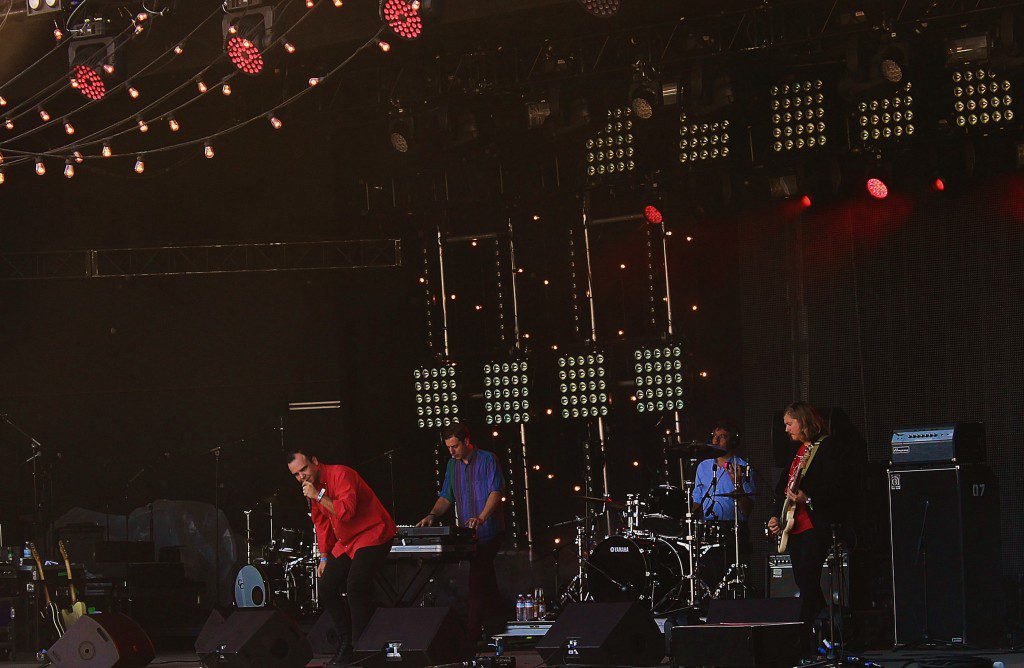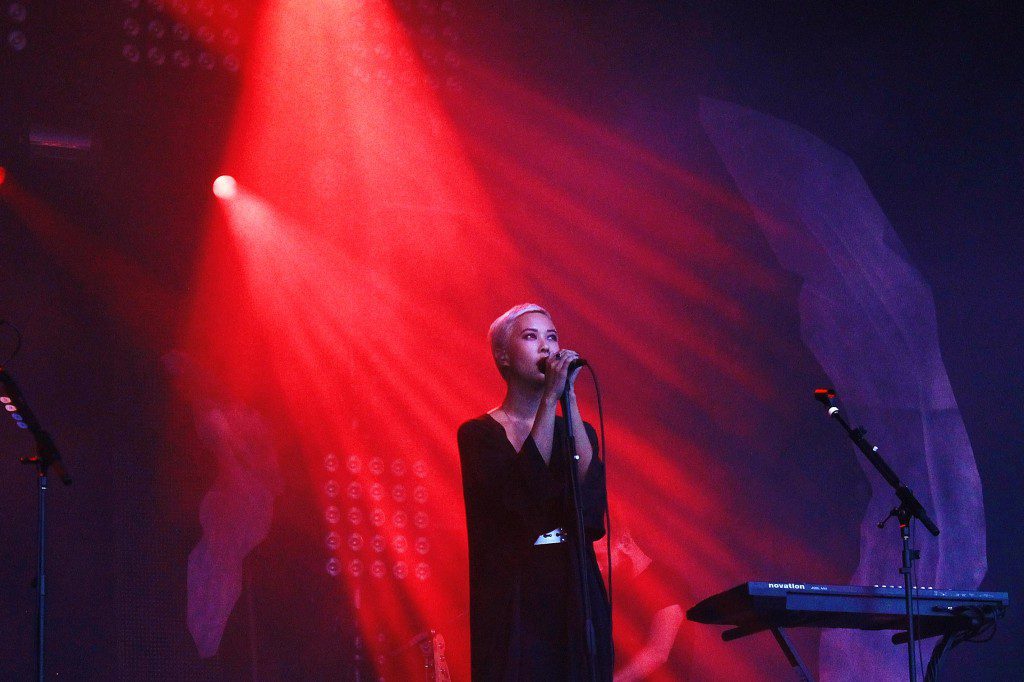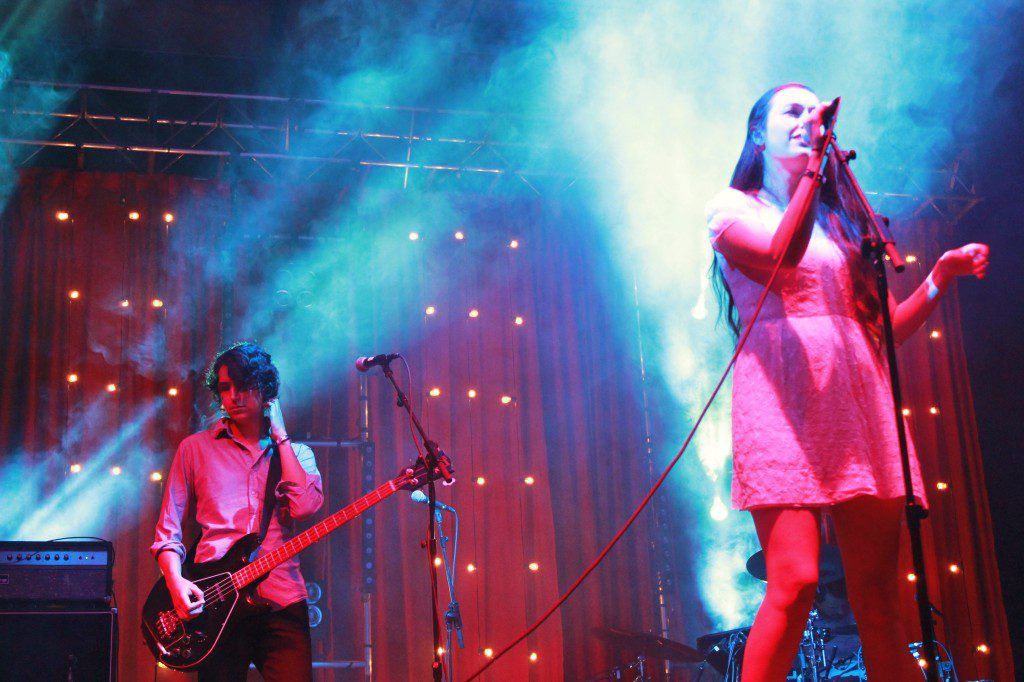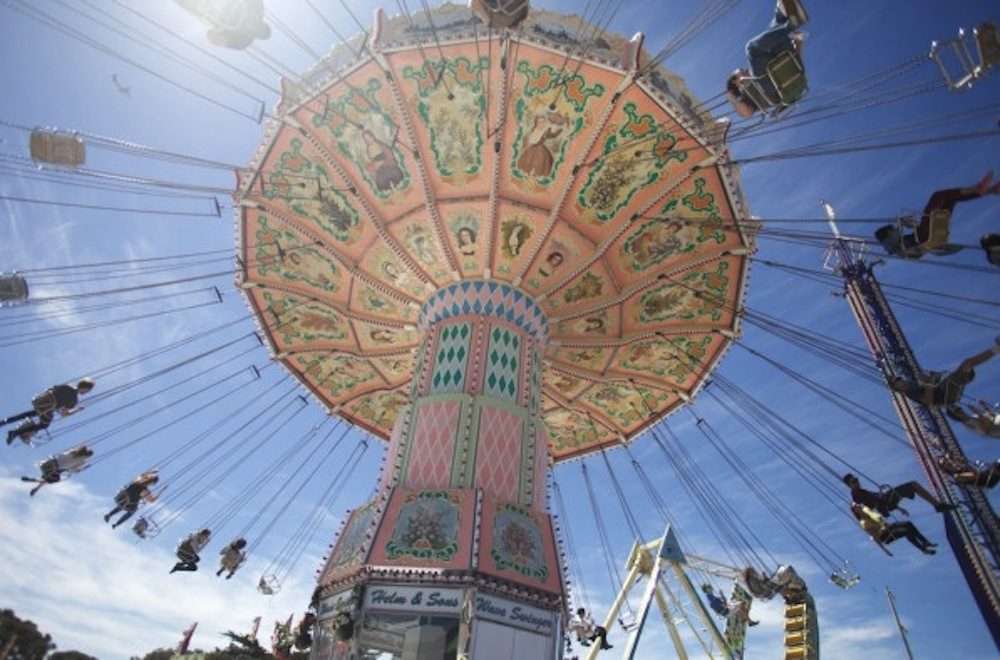
The weekend of August 23 and 24th was a big weekend for music in California. LA’s FYF fest garnered most of the attention with its headliners The Strokes and Phoenix, along with other acts like HAIM and Built to Spill. In the eleventh year since its conception, the festival has grown to be one of the go-to fests of the summer and is obviously the most talked about. But Goldenvoice has another fest cooking up interest on the same weekend. First City Festival is the Northern California counterpart to FYF, featuring Beck and The National as its headliners in only its second year running. While First City doesn’t quite have the recognition of FYF just yet, it very much has some momentum after this year’s events.
First City Festival is held in the city of Monterey, for which it earns its namesake. Monterey, CA is unofficially the state’s first capital, boasting a lot of California’s “firsts,” such as the establishment of California’s first library, public school and printing press. From a musical standpoint, Monterey is somewhat of a musical mecca, having hosted the iconic Monterey Pop Festival of 1967, the first most widely attended rock festival of its kind and, arguably, the festival that ushered in the beginning of “the summer of love.” With 55,000 people in attendance, Jimi Hendrix, The Who and Janis Joplin gave some of the most iconic performances of all time on the stage at the Monterey County Fairgrounds. Considering that it is being hosted at the very same fairgrounds as its memorable predecessor, First City Festival has a lot to prove.
First City planners face the task of defining First City’s sound, and many festivals, such as Coachella, are being criticized for lacking luster in the overall defining sound and feel of the festival. FYF very much has its feel for L.A. bands and markets itself on that very characteristic. So how did First City fare in that department? Most of the artists featured at First City were of the acoustic and indie rock vein, each with a unique sound. There were no hip hop or rap acts, and EDM was noticeably, and thankfully, absent. This eliminated a lot of that teenage partier crowd, therefore a lot of rowdiness. Between the vast marketplace of artisan goods, and the artists booked at First city, there definitely was a Monterey vibe floating around. It’s hard to describe what that means; as a California native I have vacationed in Monterey countless times and can tell you it’s not your average beach town. Its appeal comes, obviously, from its history (think John Steinbeck and Cannery Row) but also its eclecticism. It’s an artist town, with its fair share of hippies and hipsters. So yes, there was some patchouli lingering, but more importantly the vibe was definitely that of music connoisseurship. It wasn’t a party festival remotely; it was a festival for people that really enjoy experiencing live music and who appreciate true artistry.
The fairgrounds were quaint but beautiful, with three stages and, oddly, a carnival. At first I thought that this was an attempt on Goldenvoice’s behalf to ride the coattails of Coachella’s popularity (Coachella’s most prominent image is its ferris wheel). But then I realized it was more about practicality – the Monterey County Fair is right after First City (how convenient!). The atmosphere of First City was vastly different from my experiences at Coachella, and this has a lot to do with the lineup. I was open to seeing just about anyone. First on my list was Speedy Ortiz, a Massachusetts four-piece that sounds like it time warped directly from the underground indie music scene circa 1995. Their gritty guitar licks range from clear and concise picking, to fuzzed-out strumming. Paired with Sadie Dupuis’ sing-talky vocals, you’ve got a band with a refined, unrefined sound. Very grungy at times, the band experiments with moments of mellow, hypnotic, verses relying heavily on subtle background guitar feedback and lulling bass lines.
Survival Guide was next on my list. This was one of the few artists that I had listened to quite a bit beforehand, so I knew I was sure to enjoy. To my surprise, it’s actually a one-woman band. The lady behind the music, Emily Whitehurst, manned, or should I say woman-ed, a complex musical setup of a laptop, keyboards, looping machines, and strangely, a telephone. Her sound features a lot of instrumentation that I would never have guessed was created as a solo endeavor. That the music came mostly from machines rather than a full band didn’t detract from the performance in the slightest. Though she was confined to a small spot on the stage, she commanded the attention from the growing crowds of the day as she breezed through an upbeat set of electronic indie pop tunes.
By the time Miniature Tigers hit Cypress stage, the day was picking up and so were the crowds. Though their earlier releases had more acoustic guitar, the set was heavier on the dreamy synth pop of the material from their latest release, Cruel Runnings. The band’s energy was incredible and they garnered a rather large crowd, no doubt lured by their 80’s new wave appeal with a modern dance edge.
One of my favorite parts about First City is the minimal amount of overlap between bands early in the day. It makes for an easy way to discover all of the smaller artists that the event was featuring. By the time Miniature Tigers ended, we were able to head to the Manzanita stage to catch most of Doe Eye’s set. Doe Eye is a San Francisco based artist featuring sultry singer Maryam Qudus. This moody orchestral rock garnered a lot of attention considering CocoRosie was playing the main stage at the same time. The songs never really achieve a high energetic tempo, but tracks like “I Hate You” carry enough lyrical weight to make for an interesting performance underpinned with irony at times, due to Qudus’ saccharine-sweet singing.
Following up Doe Eye on the same stage was one of my favorite acts of the entire weekend, The Lonely Wild. They consider themselves “spaghetti western influenced americana,” and it must be said that there are elements of that description that are absolutely true of this LA group. Their sound explodes the idea of classical folk into climatic and often times cinematic sounds, which makes sense considering Andrew Carroll, the band’s brainchild, studied film before forming The Lonely Wild. “Everything You Need” was the song that hooked me immediately; it embodies the band’s overall sound, with dual male-female vocals, a constant foot pounding rhythm and a horn section that conjures up that desolate old west image. Not only were they a personal favorite of mine for the entire weekend, they’re the type of band that I feel exemplifies First City’s sound best.
After checking out the end of Tokyo Police Club’s set (never a disappointment there), I stuck around at the main Redwood Stage for Best Coast. Like a more well-kempt and much more jovial Courtney Love, Bethany Cosentino proved to be a strong female front with an air of nonchalance and bad-assery. Though Best Coast’s lo-fi sound from the “Boyfriend” era doesn’t do a thing for me, in a live setting I found myself enjoying all of it, and the newer material was great. It was the perfect afternoon set to kickstart the evening hours of the festival.
I couldn’t miss the opportunity to see Phantogram yet again, although it was at the expense of seeing Unknown Mortal Orchestra (the festival struggle is real). But, Phantogram never disappoints and I can’t urge people enough to see them live! Between Sarah Barthel’s general air of natural coolness and Josh “Motherfucking” Carter’s reverb-laden guitar licks, they blew the crowd away with their “fuckin’ beats” (Barthel’s words). With a performance only to be followed up by Beck, day one at First City was fulfilled.
Sunday was a bit more of a wild card for me, with little else besides Naked and The Famous really on my radar. The festival opened with a band called Midi Matilda and was such a good move on the part of the curators; their electro pop sound was not too sugary sweet and their instrumentation was impressive. Singer Skyler Kilborn is a solid front man, with his Misa Kitara style guitar (with a MIDI screen that echoes their name). But drummer Logan Grime is the powerhouse behind this duo. He reminded me of Dave Grohl on drums: precise, intense, and hard to take your eyes off of. “Day Dreams,” from their album Red Light District, was the powerful sing-along of the set, and concluded their performance on a strong note.
The Family Crest was another band to make my top shows of the weekend. With a core of seven band members – a cellist, a violinist, a tenor trombone player, a flutist, and a solid drummer – creating epic orchestral pop, I still find it hard to believe they all fit on the smallest stage at the fairgrounds. Frontman Liam McCormick has the vocal chops to carry them far in the industry, rivaling the ranges of Matthew Bellamy. They began their set with a song called “Beneath the Brine,” a ballsy opener that left jaws dropped and set the tone for the rest of the performance. Their musical grandeur is a sight to see, and their sound is really unlike anything that’s going on right now in music.
Next up was Future Islands, a band I’d regrettably turned down the opportunity to see at Coachella. Admittedly, that oversight was due to the fact that I’ve always been slightly confused by their sound. Their synth-heavy pop paired with Samuel Herring’s, erm, unclassifiable vocals were off-putting for me initially. But the beauty of live music, however, is that a performance can really change one’s perspective on a given band. What were unusual, inconsistent vocals on record, became booming and immense right before my eyes. He is a powerhouse of a vocalist, ranging from a deep rumbling voice, to flat out death metal growls. What I thought was the most strange music and vocal pairing became oh-so-right in every single possible way. He’s also an incredible and unexpected dancer. I never would have pegged this guy for theatrical but man, he was all over the place, kicking his feet into the air, Tarzan pounding his chest, and, gettin’ low. They made my top performance of the weekend hands-down to my complete surprise, mostly because I went from being uncertain about their sound to being smitten by it. Future Islands is a must see in any situation, ya hear?
Though Beck and The National obviously had the biggest sets, Naked and The Famous utilized theirs the best with what I think was the most exuberant stage production of the weekend. At the very same time slot as Phantogram the night before, Naked and The Famous ushered in the night with smoke machines and epilepsy-inducing light shows. Their unique electronic sound is only enhanced in the live performance of their songs, adding a profundity to tracks like “Rolling Waves” and “I Kill Giants.” In their last performance of the year, The New Zealand group put on an endearing show. Singer Alisa Xayalist was humbled by the dozens of birthday roses unexpectedly thrown on stage early in the set, and was almost brought to tears when the crowd later sang “Happy Birthday.”
The festival was quickly coming to a close, but there was one more act I really wanted to squeeze in before The National’s finale. Cults surprisingly drew in the largest crowd I had yet to see at the Cypress Stage, and deservedly so. Clad in a baby doll dress Madeline Follin was just adorable in her stage presence, but the band has just enough edge to make them an enjoyable listen.
So how did First City fest fare in the scope of California music festivals? Overall, I’d say it’s unique; it not only hearkens back to vaudeville days with its carnival appeal and old time-y ethos, but its purpose is to bring new music to the forefront. Sure, using Beck and The National was a way to draw in the crowds, but for the most part, there was never an empty pit at any performance, and the crowd was pretty solid throughout, which can only mean that people really were there to see all of the acts, not just the big ones. Critics complain that there wasn’t much to take in beyond the headliners and sub headliners, but I found myself enjoying every single act that I saw, even ones that I wouldn’t normally gravitate toward and ones that I hadn’t even listened to prior to First City. In its second year, I think First City has accomplished something special; it has established a niche of artists and festival-goers that will more than likely frequent the fest for years to come, a true feat given the proliferation of music festivals in general. It certainly has the momentum after this year to carry on and can hopefully serve as an alternative festival to the grit and grime of LA’s FYF.



